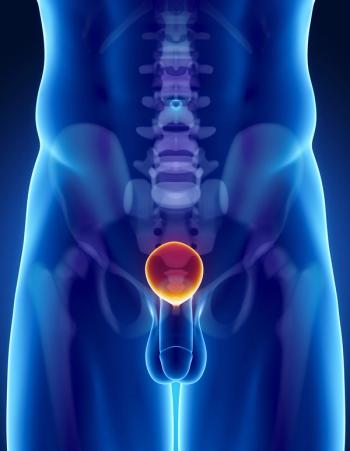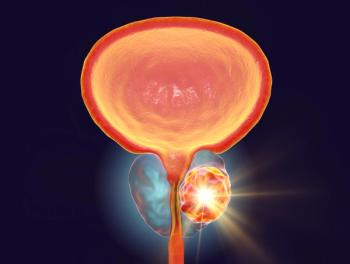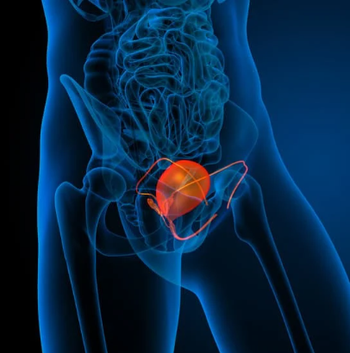
Oncology NEWS International
- Oncology NEWS International Vol 16 No 10
- Volume 16
- Issue 10
Sling helps restore bladder control after prostatectomy
A 58-year-old prostate cancer patient who developed stress urinary incontinence after successful prostatectomy was the first man at the University of Texas Southwestern Medical Center to receive a new type of sling to prevent leakage, the AdVance Male Sling System, from American Medical Systems, Minnetonka, Minnesota
DALLASA 58-year-old prostate cancer patient who developed stress urinary incontinence after successful prostatectomy was the first man at the University of Texas Southwestern Medical Center to receive a new type of sling to prevent leakage, the AdVance Male Sling System, from American Medical Systems, Minnetonka, Minnesota (see Figure).
The device has been available since August 2006, but Allen Morey, MD, was the first to use the device at UT Southwestern. Dr. Morey, professor of urology, joined the UT Southwestern faculty in June as a subspecialist in reconstructive urology.
Although slings have been used for years in women to improve urinary control, they are a relatively new treatment for men, Dr. Morey said. Prior slings were anchored to the pelvis with small bone screws to secure fixation, but that was painful for many patients.
The new device involves passage of a thin strip of mesh between pinpoint incisions on the inner thighs, which is then passed deep beneath the bottom of the urethra to increase support in precisely the area where the tissues are weakened. This additional flow resistance prevents the leakage of urine when abdominal pressure increases.
The procedure is best suited for mild-to-moderate stress urinary incontinence, usually defined as patients who wear one to four pads per day to absorb any leakage.
More than 2 million men worldwide suffer from stress urinary incontinence, and a majority of these men are prostate cancer survivors, having undergone surgery for the treatment of their cancer with the often unavoidable outcome of a damaged urinary sphincter.
"I believe there are many men who have a 'nuisance' level of urinary incontinence after prostate cancer treatment that is bothersome during strenuous activities," Dr. Morey said. "To cope, these men often restrict their activities or limit their fluid intake. We can now offer these men a chance to return to their daily activities with minimal or no pain. They are the ones who would benefit from this low-risk procedure."
Articles in this issue
about 18 years ago
Bill aims to 'revitalize' FDA by adding powers and databasesabout 18 years ago
New myeloma trial results; two new studies initiatedabout 18 years ago
Neoadjuvant trastuzumab increases pCR ratesabout 18 years ago
Court rejects right of terminally ill to unproven drugsabout 18 years ago
Sorafenib improves overall survival in Asian HCC ptsabout 18 years ago
Skipping tam doses increases risk of deathabout 18 years ago
The SGR: The madness behind physician payment fee cutsabout 18 years ago
Dr. Pegram seeks new breast cancer challenges at Miamiabout 18 years ago
SearchMedica.com receives awardNewsletter
Stay up to date on recent advances in the multidisciplinary approach to cancer.




















































































